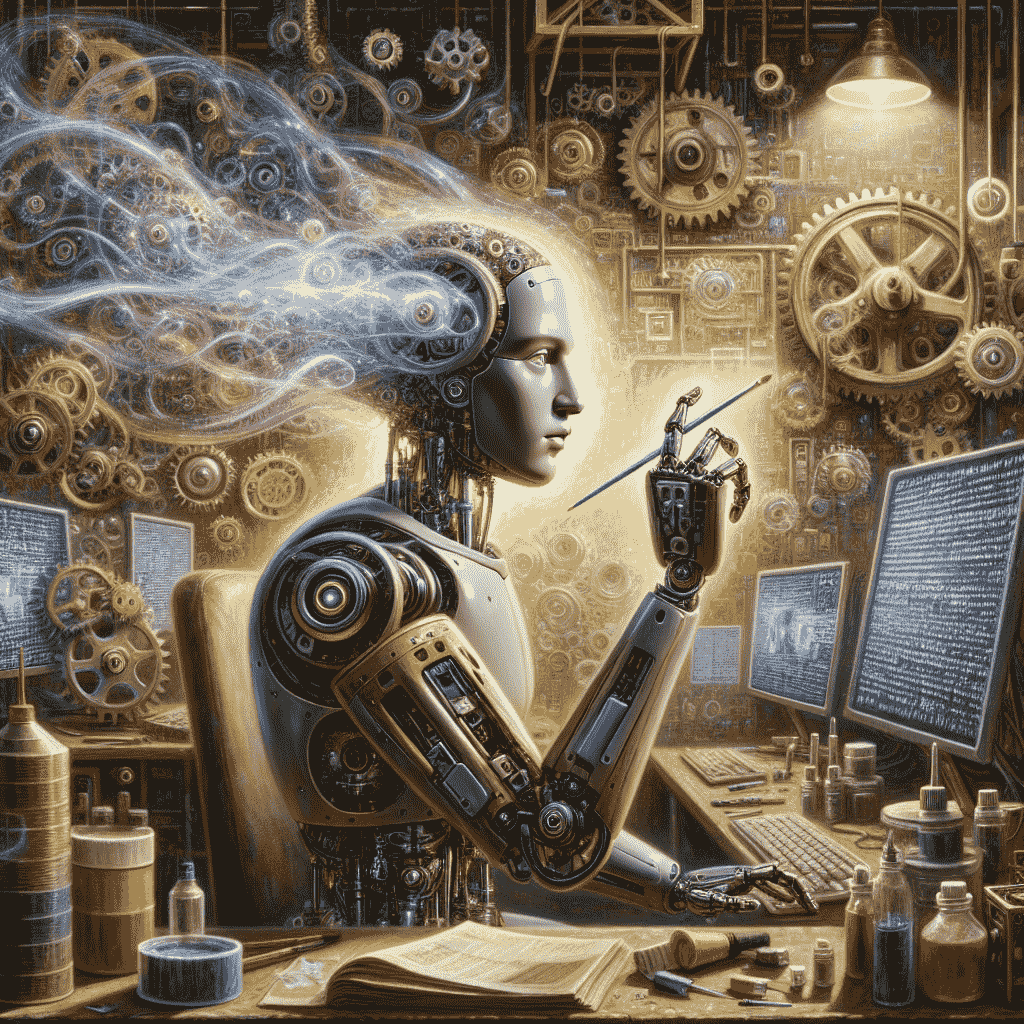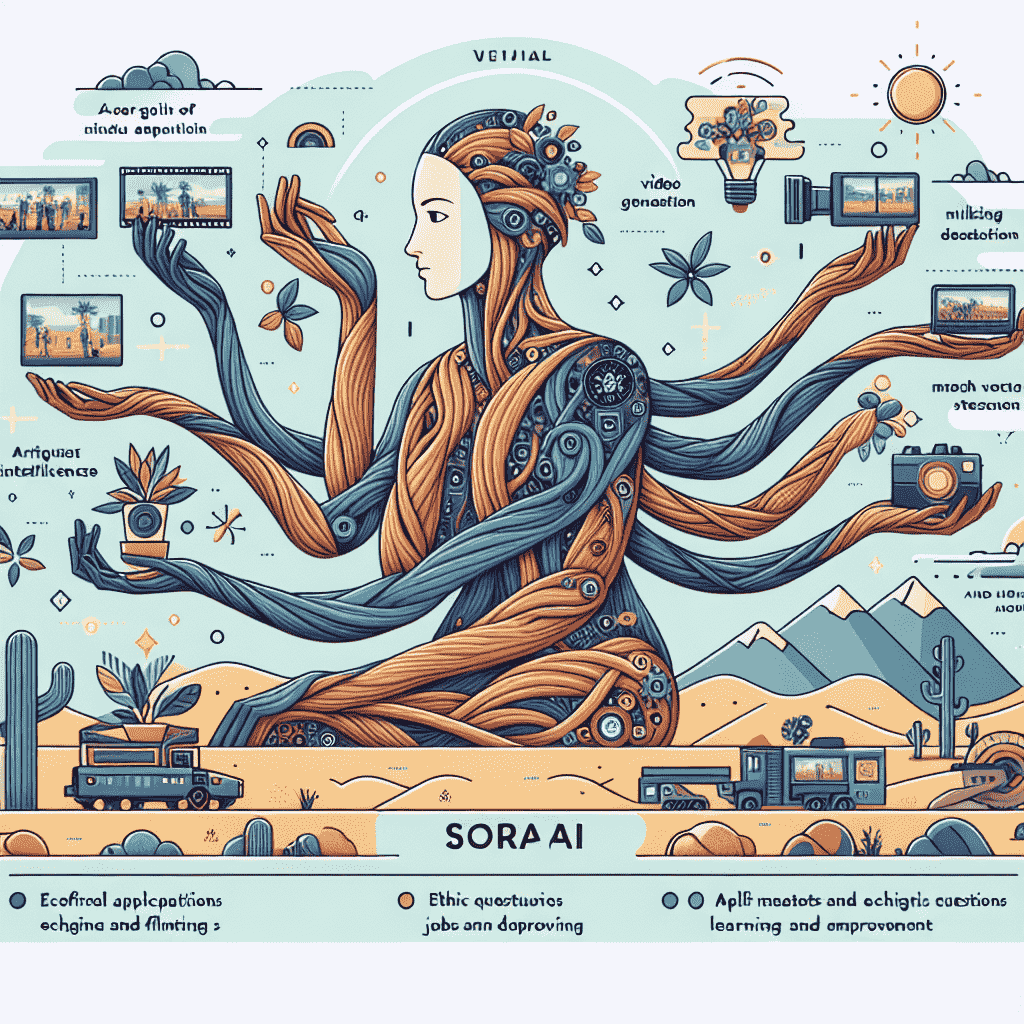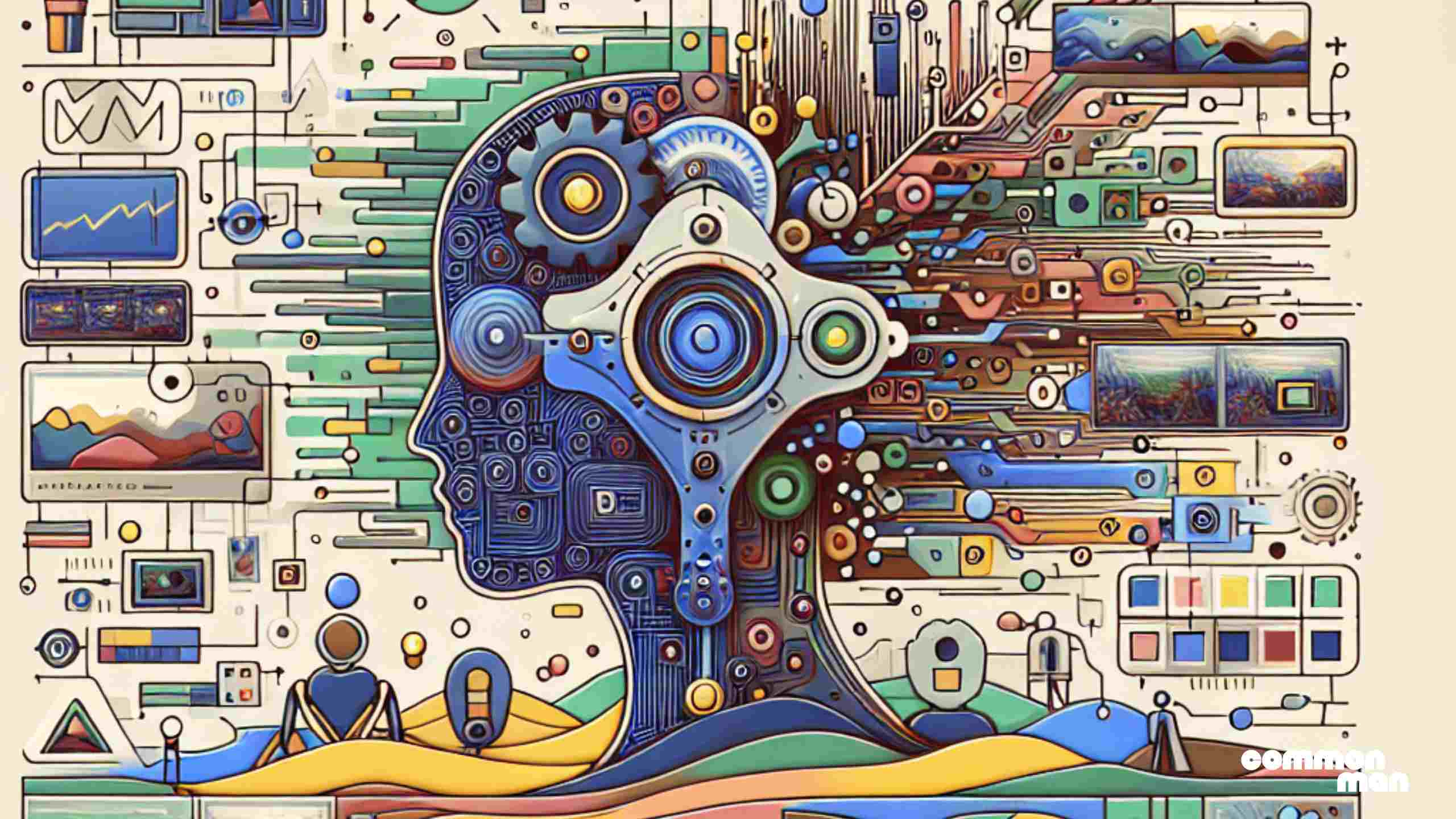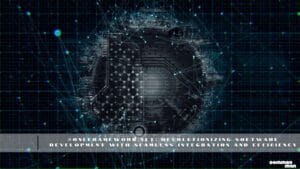OpenAI’s Sora is a groundbreaking artificial intelligence model capable of producing sensible and ingenious films from textual content commands. It represents a sizable advancement in AI generation, building upon the foundation laid through preceding fashions like DALL·E and GPT. Sora can create motion pictures up to one minute long, maintaining excessive visible excellence and adhering closely to the person’s activities. It can generate complex scenes featuring more than one character, precise varieties of movement, and unique info about subjects and backgrounds.
How Sora Works
Sora makes use of an aggregate of generative fashions and reinforcement, gaining knowledge to supply movies that aren’t only visually attractive but also rich in detail. The model has been trained on diverse datasets, permitting it to generate an extensive range of scenes and scenarios. It begins with each frame of the video consisting of static noise and uses a gadget to get to know and, step by step, transform the snapshots into something similar to the outline inside the activate.
Use Cases
Sora’s capacity programs span diverse industries:
- Creative Industries: Filmmakers can use Sora to visualize scenes before actual production, advertisers can create attractive content without great video manufacturing groups, image designers can generate particular visuals, and sports developers can create dynamic environments.
- Education: Sora may be used to create instructional motion pictures tailor-made to the wishes of freshmen, making complicated clinical principles more comprehensible and attractive.
Ethical Considerations and Potential Abuse
While Sora’s abilities are wonderful, there are issues about the potential misuse of the technology. The ability to create realistic movies from textual content activities may be exploited to create deepfakes or spread incorrect information. OpenAI has recounted these worries and is taking steps to mitigate abuse of ability.
Alternatives to Sora
Given that Sora isn’t always but to be had by the public, creators seeking out comparable gear may remember options like Veed.Io and Runway. These systems provide AI-powered text-to-video capabilities and video generation in various styles, respectively.
Availability and Future Prospects
As of now, Sora is the most useful tool for red group members to choose artists for comments. OpenAI has now not announced a specific launch date for public access. However, it’s far predicted that it will be had later this 12 months. The advent of Sora is simply the beginning, and as the AI era advances, we will count on more sophisticated models capable of growing longer and more complex movies.
what are some potential use cases for sora in the film industry

OpenAI’s Sora, a groundbreaking textual content-to-video AI model, has the capacity to revolutionize the movie industry in numerous ways. Its capacity to generate practical and innovative videos from textual descriptions opens up a myriad of possibilities for filmmakers, content material creators, and visible artists. Here are some ability-use instances for Sora inside the film enterprise:
Pre-visualization and Storyboarding
Sora can rapidly visualize and iterate on design principles for products, environments, or personal interfaces before making an investment in physical prototypes. This capability can be prolonged to the film enterprise for pre-visualization and storyboarding, permitting filmmakers to visualize scenes and sequences earlier than taking pictures, enabling informed selections and doubtlessly decreasing high-priced reshoots.
Creative Experimentation and Concept Visualization
Filmmakers can use Sora to experiment with ideas fast and efficaciously. It allows for the visualization of scenes before capturing, and architects can create video representations of merchandise before manufacturing. This notably streamlines the creative method and saves valuable time and assets.
Enhanced Creativity and Efficiency
Sora lets in for the fast era of wonderful visuals, releasing up time and sources for filmmakers to pay attention to the tale, directing, and other creative factors. It provides a value-effective solution for creating certain sorts of visuals, allowing budgetary flexibility for other manufacturing components.
Democratization of Video Creation
Sora empowers individuals with constrained access to sources or filming competencies. This democratization of video creation can pave the way for brand-spanking new voices and perspectives to emerge.
Enhanced Storytelling and Communication
Sora offers new avenues for impactful storytelling in numerous fields, from schooling and training to marketing and entertainment. The capability to create visually engaging content from textual content descriptions can decorate communique and knowledge across one-of-a-kind domains.
Animation and Visual Effects
Sora’s talents may be mainly useful for animation and visual outcomes, where creating targeted and complicated scenes can be time-eating and luxurious. Sora can generate animated scenes, characters displaying vibrant emotions, and dynamic environments, adding a layer of realism regardless of the activator’s complexity.
Accessibility for Independent Filmmakers
By decreasing the demand for good-sized video production groups and reducing production costs, Sora makes it easier for unbiased filmmakers to convey their visions to existence. This could lead to a surge in indie films and innovative content material that wouldn’t have been feasible in any other case.
Ethical and Creative Challenges
While Sora provides interesting opportunities, it also increases moral concerns and capability challenges. The film industry should navigate those carefully to make sure that AI-generated content complements human creativity without displacing it. Open and transparent discussions are essential to make sure that AI technology complements the work of human creators whilst protecting the livelihoods of those presently employed within the video and movie enterprise.
In the end, Sora’s advent into the film industry may want to mark a tremendous shift in how content is created, produced, and visualized. Its ability to streamline the innovative procedure, democratize content material advent, and open up new avenues for storytelling and visual outcomes presents thrilling opportunities and challenges that the industry will need to cope with.
how does sora compare to other text-to-video models

OpenAI’s Sora represents a sizeable development in the subject of text-to-video (T2V) fashions, supplying quite a number of abilities that distinguish it from different models in the marketplace. Here’s a complete assessment of Sora with other first-rate T2V fashions primarily based on the records provided in the search effects:
Sora (OpenAI)
- Capabilities: Sora can generate motion pictures for up to a minute with excessive visual appeal and adherence to the user’s activities. It can create complicated scenes with multiple characters, specific sorts of motion, and accurate info on topics and backgrounds. Sora makes use of a variety of versions, starting with static noise and regularly refining it into the desired video output.
- Architecture: It employs a transformer architecture, leveraging spacetime patches of video and photograph latent codes for producing motion pictures of variable periods, resolutions, and element ratios. Sora is defined as a generalist version capable of producing films and pics spanning various intervals, element ratios, and resolutions.
- Applications: Beyond generating movies from textual content prompts, Sora can animate still pics, extend existing films, and fill in lacking frames. It has been used to create the longest AI-generated music video in collaboration with the artist ‘Washed Out’.
- Limitations: Despite its skills, Sora may additionally battle with as it should be simulating complicated physics and expertise causality. It additionally restricts textual content activates for sexual, violent, hateful, or superstar imagery, as well as content providing pre-present intellectual assets.
Lumiere (Google)
- Capabilities: Lumiere can generate 5-2d-long motion pictures and is capable of growing motion pictures from image activates, animating quantities of a picture, stylizing a supply video based on text activates, and producing motion pictures inside the equal visual style as a reference photo.
- Architecture: Lumiere introduces a novel diffusion version known as Space-Time-U-Net (STUNet), which can perceive each the spatial vicinity of items inside a video and analyze their movements and modifications simultaneously.
- Applications: Lumiere’s applications encompass changing text to movies, converting pics to motion pictures with textual content activates, stylizing era with a reference photo and a text set off, and animating regions selected via the person.
Other Models
- CogVideo: Developed by researchers from Beijing’s University of Tsinghua, CogVideo can produce videos from a given description, using two fashions to make frames hierarchically.
- Phenaki Video: This version generates films directed through text that may last as long as mins, introducing an additional critic to decide what to mask all through repeated sampling.
- VideoPoet: A massive language version skilled in movies, photographs, audio, and text, able to acting an extensive range of video-generating responsibilities.
what are the limitations of openai’s sora
OpenAI’s Sora, a groundbreaking textual content-to-video AI model, has brought a new size to content material advent with its capability to generate videos from textual prompts. Despite its revolutionary abilities, Sora faces several boundaries and challenges that are crucial for users and developers to recognize. These limitations span technical, moral, and societal elements, reflecting the complexities inherent in deploying advanced AI technologies.
Technical Limitations
Inaccurate Physical Interactions and Continuity
Sora may additionally struggle with appropriately simulating the physics of positive interactions, mainly in films that won’t absolutely adhere to real-world standards. Maintaining continuity over longer video sequences remains a project, with occasional inconsistencies in object positions or behaviours.
Understanding Complex Scenarios
Sora faces obstacles in its information of complicated reason-and-effect relationships and spatial info. While the version excels at generating visually beautiful scenes, it may no longer always hold close to the subtleties of complicated narratives or correctly interpret spatial relationships among items.
Video Length and Quality Constraints
Currently, Sora can produce videos with a maximum length of one minute, which is a tremendous trouble for growing longer content material. Additionally, videos produced through Sora are limited to 1080p exceptional, which won’t meet the desires of users requiring better resolutions.
Ethical and Societal Concerns
Potential for Misuse
The potential to provide realistic films based on text descriptions may be exploited to disseminate convincing faux information or cast doubt on genuine footage, posing dangers to public trust and records integrity.
Copyright and Intellectual Property Issues
Sora’s training on great quantities of information increases worries about the potential misuse of copyrighted substances. The loss of transparency concerning the supply of Sora’s training records has sparked debates about copyright infringement and highbrow property rights.
Bias and Discrimination
Like different AI models, Sora is vulnerable to biases found in its training information. This can reinforce harmful stereotypes and discriminatory content material, elevating ethical questions about the model’s equity and inclusivity.
OpenAI’s Mitigation Efforts
OpenAI has implemented several protection measures to deal with those worries, which include the improvement of gear to detect deceptive content material and the inclusion of virtual watermarks in AI-generated movies. The agency is likewise enticing with experts in misinformation, content bias, and other relevant fields to assess capability misuse and collaborate on growing moral recommendations for Sora’s use. Despite these efforts, the limitations and challenges of Sora underscore the importance of ongoing studies, improvement, and ethical consideration in the deployment of AI technology. As Sora continues to evolve, addressing those issues will be vital for maximizing its benefits, even minimizing capability risks.
Frequently Asked Questions
What is OpenAI’s Sora?
OpenAI’s Sora is an AI version that is able to produce films as long as a minute from textual content prompts. It can produce HD films without sound, primarily based on full-size amounts of training records. Sora can also generate films from nonetheless pics, fill in missing frames in existing videos, and seamlessly stitch a couple of videos collectively.
Is Sora available to the public?
No, Sora is presently in the research section and no longer to be had to the general public. It has been made available to “crimson teamers” to check out security and balance, as well as a select number of visual artists, designers, and filmmakers for comments.
What are some limitations of Sora?
Sora’s barriers include unrealistic physics once in a while, with humans disappearing or transforming abruptly. It does not map out scenes with male or female actors and props; however, it calculates where pixels have to cross from frame to border, which could lead to inconsistencies.
Are there any alternatives to Sora?
Yes, there are several options for Sora, including Phenaki via Google Research, Make-A-Video with the aid of Meta AI, Synthesia, Hour One, and Colossyan. These options provide numerous functions and capabilities for generating movies from textual content or pix.
Has there been any controversy surrounding Sora?
Yes, there has been controversy, especially regarding moral concerns and copyright troubles. For instance, The New York Times sued Microsoft and OpenAI, accusing them of training their AI fashions with copyrighted newspaper articles without permission. Additionally, there have been scams pretending to offer Sora for download, mainly due to safety dangers for people.
How can I protect myself from Sora-related scams?
Be careful of any internet site or social media page providing a download for Sora. OpenAI no longer has Sora for public download. Avoid downloading files from unofficial assets, particularly executable documents (.Exe), as they’ll comprise malware. If you encounter a suspicious site, record it with the correct government, and don’t forget to run a pandemic test for your tool.
When will Sora be available to the public?
There is no confirmed release date for Sora to be shared with the broader public. OpenAI has stated that they’re sharing their studies progress early to get comments and give the public an experience of upcoming AI skills. The timeline for public access should trade, relying on the resolution of protection problems.
How does OpenAI plan to address the ethical concerns with Sora?
OpenAI is taking several safety steps, such as working with crimson teamers to test for harm or risks, developing equipment to come across deceptive content, and working with policymakers, educators, and artists to recognize issues and pick out effective use instances for the generation.
Bottom Line
OpenAI’s Sora represents a soar forward in AI-generated content, with the ability to revolutionize many industries. However, it’s miles essential to stabilize the advantages and the dangers of misuse. As we pass into a brand new generation of AI-generated content material, equipment like Sora will certainly play a full-size role in shaping our digital landscape.
Sora stands out for its capability to generate terrific, minute-long movies from text activities, showcasing a huge range of abilities from animating nonetheless snapshots to extending movies. Its use of a ramification version and transformer architecture, alongside its generalist method of handling various video and photograph sorts, positions it as a leading model in the text-to-video domain. While Lumiere and different models like CogVideo and Phenaki Video provide their specific strengths, Sora’s comprehensive abilities, particularly in producing complex scenes and adhering carefully to consumer prompts, spotlight its ability to revolutionize video content advent.









